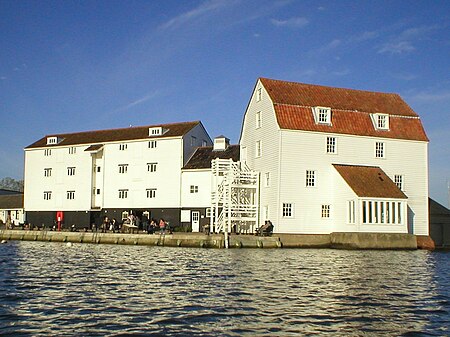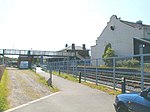Woodbridge Tide Mill
Grade I listed buildings in SuffolkGrade I listed industrial buildingsGrade I listed water millsMill museums in EnglandMuseums in Suffolk ... and 4 more
Tide millsUse British English from February 2023Watermills in SuffolkWoodbridge, Suffolk

Woodbridge Tide Mill in Woodbridge, Suffolk, England is a rare example of a tide mill whose water wheel still turns and is capable of grinding a wholemeal flour. The mill is a Grade I listed building. It is a three-storey building constructed from wood; externally it is clad in white Suffolk boarding and has a Gambrel roof. Its machinery reflects the skills and achievements of the early Industrial Revolution. It has been preserved and is open to the public. The reservoir constructed for demonstration purposes is roughly half an acre in extent, the original 7-acre (28,000 m2) one is now a marina.
Excerpt from the Wikipedia article Woodbridge Tide Mill (License: CC BY-SA 3.0, Authors, Images).Woodbridge Tide Mill
Tide Mill Way, East Suffolk
Geographical coordinates (GPS) Address Website External links Nearby Places Show on map
Geographical coordinates (GPS)
| Latitude | Longitude |
|---|---|
| N 52.0901 ° | E 1.3209 ° |
Address
Woodbridge Tide Mill
Tide Mill Way
IP12 1BY East Suffolk
England, United Kingdom
Open on Google Maps









